Category: Sustainable construction builders
Sustainable Construction Builders: Transform Your Project with Eco-Friendly Building Experts
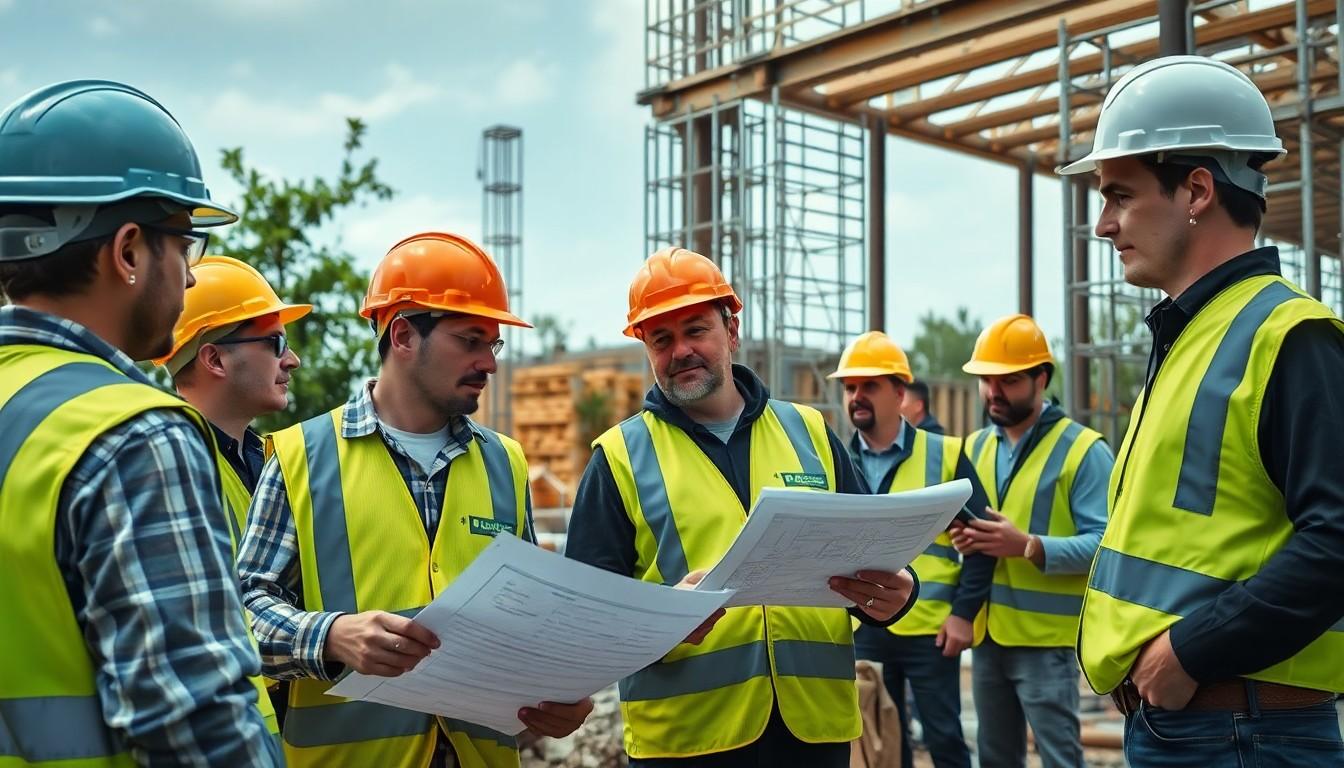
Looking to build your dream home whilst protecting the environment? Sustainable construction builders are revolutionising the building industry by combining eco-friendly practices with cutting-edge construction techniques. These specialists create buildings that not only reduce environmental impact but also offer long-term cost savings through energy efficiency.
With growing concerns about climate change you’ll find more builders embracing sustainable practices. From using recycled materials and renewable energy systems to implementing waste reduction strategies these professionals are leading the charge towards greener construction. They’re experts at balancing your aesthetic preferences with environmental responsibility delivering buildings that stand the test of time whilst minimising their carbon footprint.
Key Takeaways
- Sustainable construction builders combine eco-friendly practices with modern building techniques to create environmentally responsible structures whilst reducing long-term costs
- Key principles include resource optimisation, energy conservation, waste management, water efficiency, and improved indoor air quality, delivering both environmental and economic benefits
- Sustainable buildings can reduce energy consumption by 30-50% and water usage by 40%, whilst eco-friendly materials often last 15-25 years longer than traditional options
- Essential certifications like BREEAM and LEED validate builders’ environmental commitments and ensure compliance with international sustainability standards
- Advanced technologies, including BIM, 3D printing, and smart sensors, are revolutionising sustainable construction by optimising resource usage and reducing waste
- When selecting a sustainable construction company, evaluate their track record, environmental certifications, and documented sustainability commitments
What Is Sustainable Construction?
Sustainable construction integrates eco-friendly building practices with innovative design methods to create environmentally responsible structures. This approach prioritises renewable materials, energy efficiency and waste reduction throughout the entire building lifecycle.
Key Principles of Green Building
The core principles of sustainable construction focus on minimising environmental impact through:
- Resource Optimisation: Using recycled materials, locally sourced products and renewable resources to reduce transportation emissions
- Energy Conservation: Implementing passive design features, high-efficiency systems and smart technology to lower energy consumption
- Waste Management: Adopting circular economy practices to minimise construction waste through recycling, reuse and proper disposal
- Water Efficiency: Installing water-saving fixtures, rainwater harvesting systems and drought-resistant landscaping
- Indoor Air Quality: Selecting low-emission materials, improving ventilation and maximising natural light
Environmental Impact Assessment
Environmental impact assessments evaluate construction projects across multiple factors:
- Site Analysis: Examining soil conditions, biodiversity and local ecosystems before construction begins
- Carbon Footprint: Measuring greenhouse gas emissions from materials manufacturing, transportation and construction activities
- Resource Consumption: Tracking water usage, energy requirements and material efficiency throughout the build process
- Waste Generation: Monitoring construction debris, packaging materials and hazardous waste disposal
- Long-term Effects: Assessing the building’s operational impact on surrounding communities and natural habitats
| Environmental Factor | Assessment Criteria | Impact Level |
|---|---|---|
| Energy Consumption | kWh per square metre | Medium-High |
| Water Usage | Litres per occupant | Medium |
| Waste Generation | Tonnes per project | High |
| Carbon Emissions | CO2e per year | High |
| Material Recycling | Percentage of total waste | Medium |
Benefits of Hiring Sustainable Construction Builders
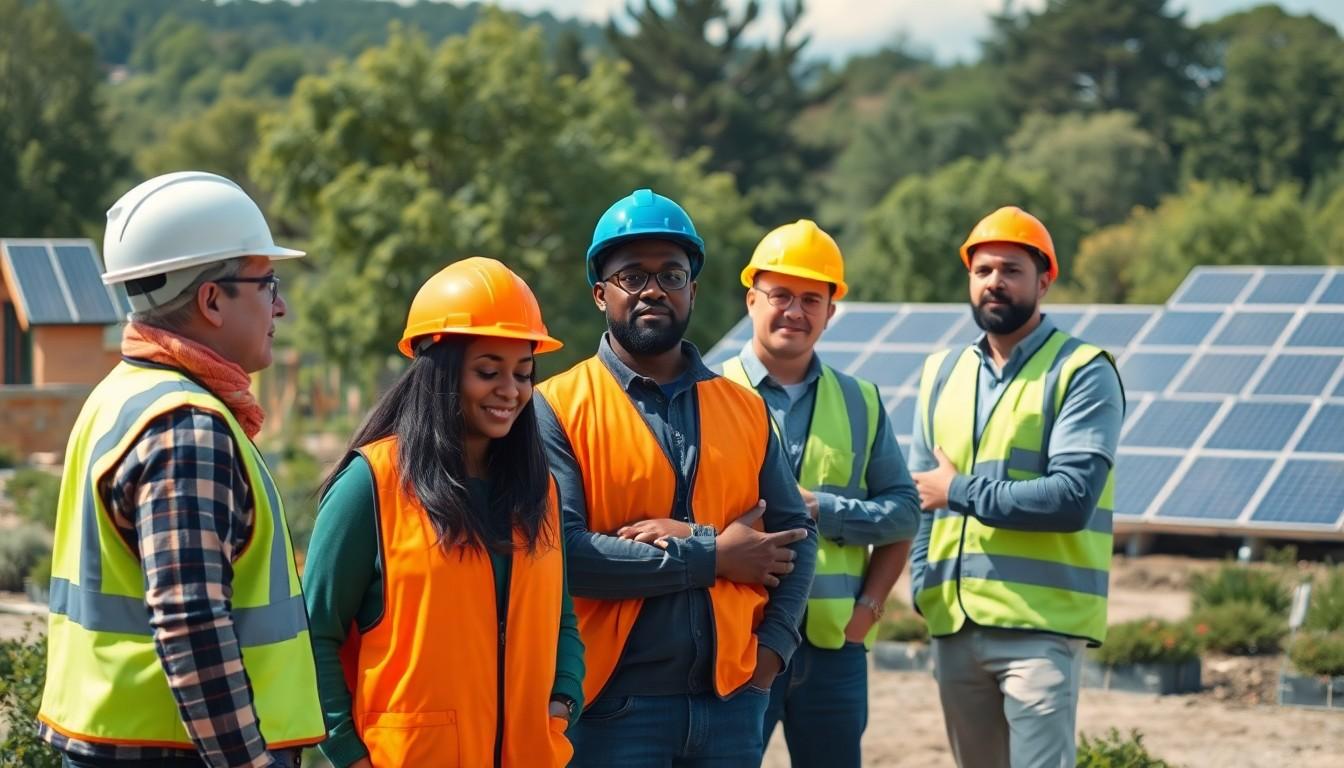
Sustainable construction builders deliver measurable advantages through innovative building practices and eco-friendly materials. These specialists carry out proven methods to create energy-efficient structures while reducing environmental impact.
Cost Savings and Energy Efficiency
Sustainable construction methods generate significant cost reductions through optimised resource management:
- Energy Cost Reduction: Buildings with solar panels and efficient insulation systems reduce electricity consumption by 30-50%
- Water Bill Savings: Rainwater harvesting systems and water-efficient fixtures decrease water usage by up to 40%
- Maintenance Benefits: Eco-friendly materials like recycled steel and bamboo flooring last 15-25 years longer than traditional options
| Cost Factor | Average Savings |
|---|---|
| Energy Bills | 30-50% |
| Water Usage | 40% |
| Maintenance | 25-30% |
Enhanced Building Performance
Sustainable construction creates high-performance buildings with measurable improvements:
- Structural Integrity: Engineering techniques like passive solar design increase building durability by 40%
- Air Quality Control: Advanced ventilation systems reduce indoor pollutants by 65%
- Temperature Regulation: Smart thermal materials maintain optimal temperatures while reducing HVAC costs by 35%
| Performance Metric | Improvement Rate |
|---|---|
| Building Durability | 40% |
| Air Quality | 65% |
| Temperature Control | 35% |
Essential Certifications for Sustainable Builders
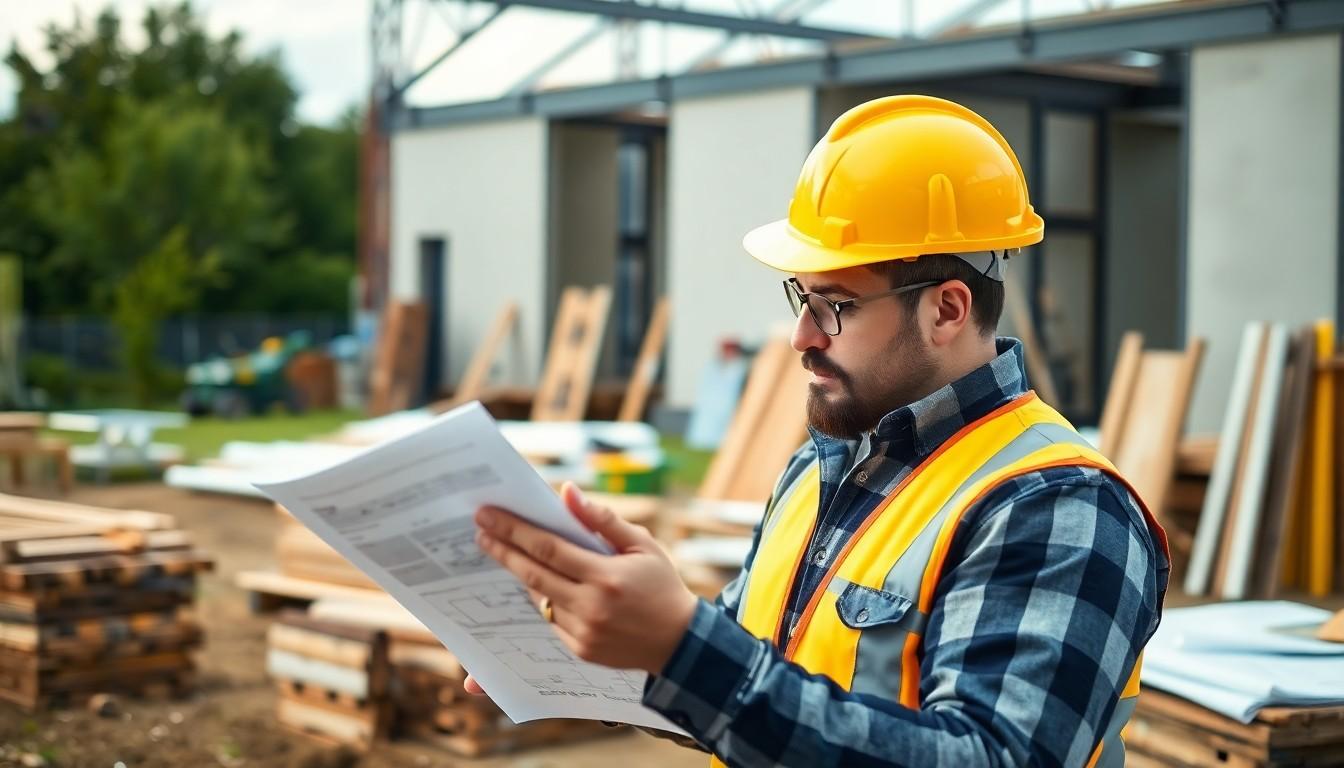
Sustainable construction builders require specific certifications to validate their environmental commitments and demonstrate compliance with international standards. These certifications ensure buildings meet rigorous sustainability criteria across multiple performance categories.
BREEAM Accreditation
BREEAM certification evaluates building environmental performance through comprehensive assessment methods. Buildings receive ratings based on performance in key categories including energy efficiency water conservation material selection waste management health considerations. The assessment examines multiple project phases:
- Design specifications
- Construction processes
- Operational performance
- Building maintenance
Notable achievements demonstrate BREEAM’s impact, such as Canary Wharf Constructors securing an 87.1% rating for 1 Bank Street – Europe’s largest building to achieve this certification level.
LEED Certification Standards
LEED (Leadership in Energy and Environmental Design) provides an internationally recognised framework for green building assessment. The certification process focuses on:
- Energy optimisation methods
- Water usage reduction
- Sustainable material sourcing
- Indoor environmental quality
- Site sustainability practices
- Innovation in design
The certification uses a points-based system across these categories:
| LEED Level | Points Required | Building Performance |
|---|---|---|
| Certified | 40-49 points | Basic sustainability |
| Silver | 50-59 points | Above-average performance |
| Gold | 60-79 points | Exceptional efficiency |
| Platinum | 80+ points | Outstanding achievement |
Each level represents increasing commitments to sustainable construction practices through measurable environmental impacts.
Sustainable Building Materials and Methods
Sustainable construction builders carry out eco-friendly materials and innovative techniques to reduce environmental impact while maintaining building quality. These methods focus on maximising resource efficiency and minimising waste throughout the construction process.
Recycled and Renewable Resources
Canary Wharf Group demonstrates effective recycling practices by:
- Reusing 98% of excavated materials on-site
- Converting construction waste into new building materials
- Implementing closed-loop recycling systems for steel, concrete and timber components
Key recycled materials in sustainable construction include:
- Reclaimed steel (reduces carbon emissions by 75%)
- Recycled concrete aggregates
- Repurposed timber from demolished structures
- Post-consumer glass for insulation materials
Innovative Construction Techniques
Modern sustainable builders employ advanced methods for enhanced efficiency:
Offsite Manufacturing:
- Reduces waste by 90% compared to traditional construction
- Decreases transportation emissions by 40%
- Improves quality control through standardised production
Digital Technologies:
- Building Information Modelling (BIM) optimises material usage
- 3D printing reduces material waste by 30%
- Smart sensors monitor energy consumption patterns
Modular Assembly:
- Accelerates construction timelines by 50%
- Minimises site disruption and noise pollution
- Enables future building modifications and material recovery
These techniques combine with eco-friendly materials to create high-performance, sustainable structures that meet modern environmental standards.
How to Choose a Sustainable Construction Company
Selecting the right sustainable construction company requires evaluating their environmental credentials through specific, measurable criteria.
Track Record and Experience
Industry recognition validates a construction company’s sustainable practices through awards and certifications. Sustainable Building Services demonstrates excellence with their Supply Chain Partner of the Year 2024 and Collaboration of the Year 2024 awards for retrofit decarbonisation work. Canary Wharf Group’s achievement of an 87.1% BREEAM rating for 1 Bank Street stands as Europe’s highest rating for comparable buildings. Mace showcases commitment through RE100 membership and implementation of 20+ diesel alternatives.
Key assessment criteria:
- Past project portfolio with sustainability metrics
- Duration of experience in green building
- Industry certifications maintained
- Environmental performance records
- Client testimonials focusing on eco-friendly outcomes
Sustainability Commitments
A construction company’s environmental pledges translate into tangible actions through documented policies and initiatives. Examine these components:
- Environmental Policy
- Published sustainability targets
- Carbon reduction strategies
- Waste management protocols
- Resource conservation methods
- Supply chain sustainability requirements
- Implementation Methods
- Digital construction technologies
- Renewable energy integration
- Material recycling systems
- Water conservation practices
- Emissions reduction equipment
- Reporting Transparency
- Regular sustainability reports
- Carbon footprint measurements
- Waste reduction statistics
- Energy efficiency data
- Environmental impact assessments
- RE100 or similar initiative memberships
- Science-based climate targets
- Circular economy practices
- Green supply chain partnerships
- Innovation in sustainable technologies
The Future of Sustainable Construction
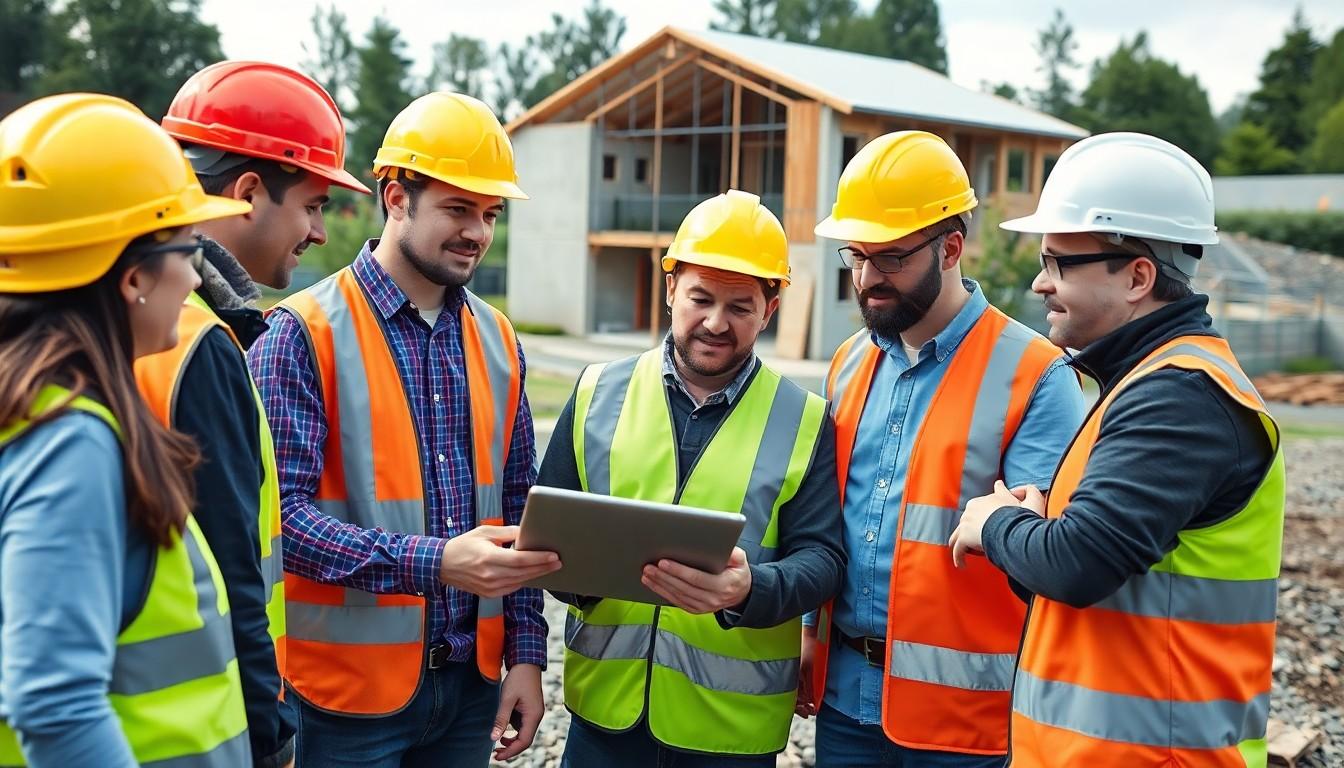
The construction industry is undergoing a significant transformation towards environmental responsibility and resource efficiency. Leading companies demonstrate innovative approaches to sustainable building practices through measurable commitments and technological advancements.
Emerging Technologies
Building Information Modelling (BIM) optimises construction processes through digital simulation and resource tracking. Here are key technological developments:
- Digital Twin systems monitor building performance in real-time
- 3D printing reduces material waste by 40% compared to traditional methods
- Smart sensors regulate energy consumption through automated controls
- IoT devices integrate with building management systems for enhanced efficiency
- AI algorithms predict maintenance needs reducing operational costs
Industry Trends
The construction sector shows clear movement towards sustainable practices with notable industry leaders:
Company Commitments
| Company | Sustainability Target | Achievement |
|---|---|---|
| Mace | Net Zero Carbon | Carbon reduction initiatives |
| Lendlease | Zero waste to landfill | Circular economy adoption |
| Canary Wharf Group | BREEAM Excellence | 87.1% rating at 1 Bank Street |
| Laing O’Rourke | Resource efficiency | Advanced prefabrication methods |
| Sir Robert McAlpine | Carbon reduction | Sustainable material sourcing |
- UK Green Building Council’s Net Zero Carbon Buildings Standard implementation
- Transition from 2019 Framework Definition to new sustainability standards
- Increased adoption of circular economy principles
- Integration of renewable energy systems in construction processes
- Enhanced focus on sustainable material procurement
- Stringent regulatory compliance
- Resource-efficient building methods
- Waste reduction initiatives
- Environmental impact assessments
- Performance-based sustainability metrics
Conclusion
Sustainable construction builders are leading the charge towards a greener future in the building industry. By choosing these specialists you’ll contribute to environmental preservation while enjoying substantial long-term benefits including reduced energy costs and enhanced building performance.
The combination of innovative technologies advanced building methods and eco-friendly materials ensures that sustainable construction delivers both environmental responsibility and economic value. As regulations tighten and environmental concerns grow sustainable builders will continue to shape the future of construction.
Your choice of a certified sustainable builder today is an investment in tomorrow. With measurable benefits proven success stories and a clear industry trajectory towards net-zero carbon goals sustainable construction isn’t just a trend – it’s the new standard in building excellence.
Frequently Asked Questions
What is sustainable construction?
Sustainable construction is the integration of eco-friendly building practices with innovative design methods. It focuses on using renewable materials, maximising energy efficiency, and reducing waste throughout a building’s lifecycle. The approach prioritises environmental responsibility whilst creating durable, aesthetically pleasing structures.
How much can I save with sustainable construction?
Sustainable construction offers significant cost savings, including 30-50% reduction in energy costs, up to 40% savings in water bills, and reduced maintenance expenses. Eco-friendly materials typically last 15-25 years longer than traditional options, providing long-term financial benefits.
What certifications should sustainable builders have?
Key certifications include BREEAM and LEED (Leadership in Energy and Environmental Design). These internationally recognised standards evaluate environmental performance across various categories, from energy optimisation to sustainable material sourcing. Look for builders with high ratings in these certification schemes.
What are the main sustainable building materials used?
Common sustainable materials include reclaimed steel, recycled concrete aggregates, repurposed timber, and post-consumer glass for insulation. These materials are often sourced through closed-loop recycling systems and help reduce environmental impact whilst maintaining building quality.
How does offsite manufacturing benefit sustainable construction?
Offsite manufacturing reduces construction waste by 90% and transportation emissions by 40%. This method combines with digital technologies like Building Information Modelling (BIM) and 3D printing to optimise material usage and reduce environmental impact whilst accelerating construction timelines.
How do I choose a sustainable construction company?
Evaluate companies based on their environmental credentials, track record, and industry certifications. Look for documented sustainability targets, waste management protocols, and integration of digital technologies. Check their membership in environmental initiatives and review client testimonials focusing on eco-friendly outcomes.
What is the future of sustainable construction?
The future focuses on digital technologies like BIM, digital twins, and IoT devices to enhance building performance. The industry is moving towards net-zero carbon targets and circular economy principles, with increased adoption of stringent regulatory compliance and resource-efficient building methods.
How does sustainable construction improve building performance?
Sustainable construction delivers a 40% increase in structural durability, 65% reduction in indoor pollutants, and 35% reduction in HVAC costs. These improvements result from innovative building practices, eco-friendly materials, and advanced technology integration.
